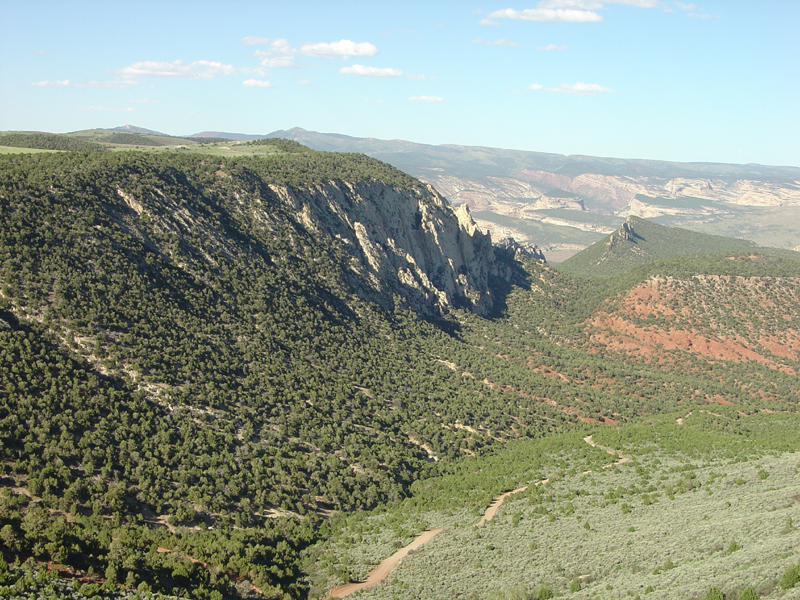| This view is from the Iron Springs Bench Overlook along the Harpers Corner Self-guiding Scenic Drive in the central portion of Dinosaur National Monument. The view shows the flank of a great monoclinal fold in sedimentary strata. The hogbacks (near vertical layers eroded into pinnacles) are part of the Weber Sandstone of Pennsylvanian age to Early Permian age (about 300 to 275 million years). The partially forest-covered red layers on the right are part of younger Mesozoic-age sedimentary rock formations. (The rocks shown here do not include the Morrison Formation; the rock formation that bears dinosaur fossils known in other sections of the park). The great monoclinal fold formed long after the sedimentary layers were deposited. They were pushed up into a great folded uplift during the Laramide Orogeny (Late Cretaceous to Oligocene (Willis, 2000). Since then the region has experienced additional periods of uplift and extensive erosion. Today the region consistsmostly of erosionally dissected plateaus cut by major rivers (the Green and Yampa Rivers) and their tributary streams (Gregson and Chure, 2000). Click here to learn more about the stratigraphy of the Dinosaur National Monument area. |

